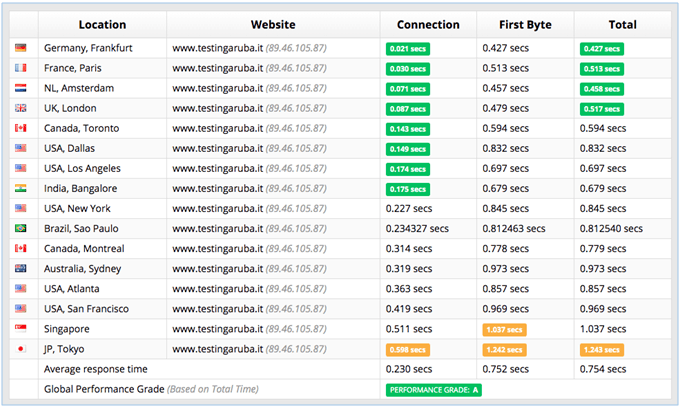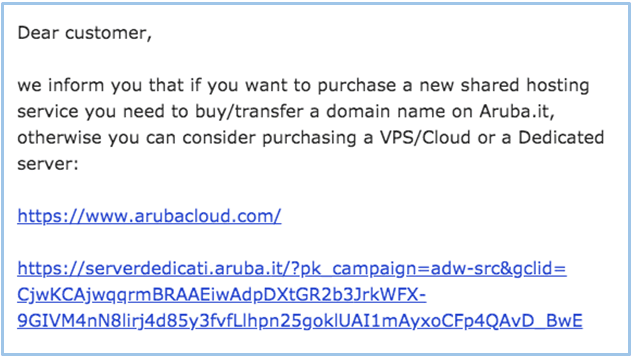(Nearly) Everything You Need
Aruba.it is a big company, so you’d expect it to offer all the standard hosting features as well as some bonus ones. And it doesn’t disappoint (most of the time).
It offers all the usual features like SSL certificates, automatic daily backups, and antivirus and anti-spam protection, but common features like free website migration and a content delivery network (CDN) are not included.
Let’s dig a little deeper into some of the most interesting features Aruba.it has to offer.
Choice of Operating Systems and Platforms
Aruba.it offers a range of options for your website. Not only are there WordPress-specific packages, you can also choose from Windows or Linux operating systems, or Joomla, Drupal, PrestaShop, or Magento content management systems (CMS). Overall, it’s a decent range of options for a shared hosting provider.
Features Designed for Developers
I’m not going to tell you that Aruba.it is the best host for developers—providers like DigitalOcean and Vultr have more to offer. But what I can say is the range of features for developers is decent for this type of host. To give you an idea, there’s support for PHP 7.2, Perl 5.16, Python 2.7, and Ruby 2.4.2, as well as phpMyAdmin and MySQL database.
GDPR-Ready Features
If you’re doing business in the EU, your website is most likely subject to the new General Data Protection Regulation (GDPR). Aruba.it offers a suite of GDPR features, such as SSL certificates, malware detection, and daily backup. Your site will be in compliance and the features could help you avoid any financial penalties.
Data Protection
Aruba.it makes a big deal out of its data protection features. It won’t sell your data to third parties, and because your data is stored in Europe, it’s not subject to U.S. laws such as the Patriot Act or the Foreign Intelligence Surveillance Act (FISA).
Unlimited Disk Space and Traffic
Aruba.it makes it easy to understand your resource quotas. All plans come with unlimited disk space and unlimited monthly traffic. Unfortunately, Aruba.it doesn’t provide a clear explanation of how much usage is considered acceptable and at what point your usage will be capped. In most cases with unlimited resources, as long as you’re using the website for normal activity, you’ll be fine.














